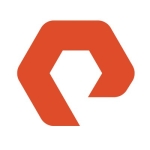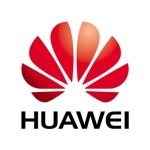What is our primary use case?
We host data for our users via CIFS and NFS protocols.
This is a physical appliance.
What is most valuable?
We found its Snapshots to be quite valuable. They allow us to restore data, in a timely fashion, that has accidentally been overwritten, modified, or deleted. That is the biggest feature.
In terms of the footprint, it is far more efficient. It has smaller, higher-capacity drives than our older unit. In terms of space, power, and cooling, it has simplified things.
What needs improvement?
The newest version of ONTAP has a bit of a learning curve because you need to learn where things are to find them. It is not impossible, but when you are accustomed to the older version of ONTAP, it just takes a bit getting used to it, but it is about the same as before.
The front-end of ONTAP and its web UI could be improved. It has been a little while since I interacted with the interface, but my recollection is that because of the learning curve and things moving around, it is less intuitive than the previous version.
For how long have I used the solution?
We purchased it over a year ago. However, we really started using it several months ago. We had originally set it up in our old data center, then we decided to move it to our new data center before using it in production. It has been up and running for six or seven months.
What do I think about the stability of the solution?
So far, stability has been good. We haven't seen any problems. It has been just a few months, but even going back to the previous model of the NetApp NAS that we've had, I can't fault the stability. It has been extremely stable.
What do I think about the scalability of the solution?
Because of the small footprint, the device allows for easier scalability in terms of rack space. Our previous solution used up almost an entire cabinet in our data center, which makes scaling a bit challenging because you need to find another cabinet, then cable across cabinets. This device is a lot easier because of its small footprint.
We have about four rack units in total. At this point, I don't anticipate any physical expansion. If we are going to expand, it will probably be to the cloud for a variety of reasons.
How are customer service and support?
Our experience with NetApp's support has been superb. They are very proactive. I have nothing but good things to say about NetApp as well as our reseller that we work through, Indocurrent. The combination of Indocurrent and NetApp has led to a fantastic experience for us over the past year. I hope that doesn't change, and it hasn't changed since we went live with AFF.
I would rate NetApp's support as 10 out of 10.
How would you rate customer service and support?
Which solution did I use previously and why did I switch?
We have seen performance improvements between AFF and our older NetApp, which was several years old.
We moved to the AFF model for performance, going from just spinning hard desks to all-flash. Also, its deduplication rate is another positive that we have seen. We have been able to extend it further than its physical capacity by utilizing the deduplication that the platform offers.
We don't have a SAN environment. We are just using it as a NAS. It is not any more or less complicated than our environment was before. We are still utilizing the same things, like export policies, quotas, qtrees, etc. that we were using with our older platform. It is about the same as it was before.
How was the initial setup?
The deployment was done over the course of a couple of months. This was mostly scheduling time on our end to work with the integrator. We then had to schedule time to go prep it to be moved from Manhattan to New Jersey, before moving it, setting it up, and getting things back online. So, it took a couple of months to get set up.
For customers who had it moved or shipped directly to the device's final destination, it shouldn't take that long to set it up if you have either a quality integrator or a substantial amount of experience with NetApp.
What about the implementation team?
Because I worked with our reseller, Indocurrent, we had someone who had a substantial amount of experience with NetApp. I wasn't as hands-on in terms of deploying it, but I was there with him as he deployed it. I watched him, observed him, and learned from him. Learning from that person was actually helpful.
It was very straightforward working with the reseller. They have always been responsive to us. I have nothing but good things to say about our reseller/integrator. I would recommend Indocurrent as a reseller.
What was our ROI?
The amount of time that our IT support spends on it is minimal. Therefore, any cost savings would be negligible.
What's my experience with pricing, setup cost, and licensing?
I looked at other vendors for other potential projects and thought NetApp's pricing was very competitive.
We are in the process of procuring the necessary license to do SnapMirror and back that data up to the cloud via AWS. Hopefully, we will be using that shortly.
Which other solutions did I evaluate?
We have had such a good experience with NetApp that our next logical step up from our previous device was just another NetApp.
NetApp has been reliable for us. Their technologies have been rock-solid. That is why we felt comfortable going from their older model to their newer model, AFF, rather than looking for a new vendor.
What other advice do I have?
It is a good platform. If you don't have a lot of in-house experience setting things up physically, I recommend working with a good reseller. Find a good reseller whom you trust that has experienced staff and work hand-in-hand with them. You learn as you go, then once the device has been deployed, you can manage it for yourself.
Take advantage of NetApp's knowledge base and support site. It has a lot of very good documentation and how-to guides that explain how to accomplish what you want to accomplish.
Get comfortable with the ONTAP command line because it is a very powerful tool that would allow you a lot of flexibility in terms of accomplishing many tasks. Where you might need multiple clicks and screens in the ONTAP web version, the command line allows you to do things with a relatively simple command.
I would rate this solution as 10 out of 10.
Disclosure: PeerSpot contacted the reviewer to collect the review and to validate authenticity. The reviewer was referred by the vendor, but the review is not subject to editing or approval by the vendor.















